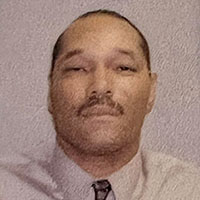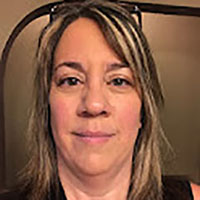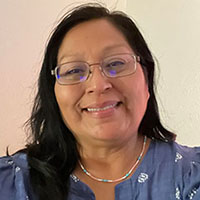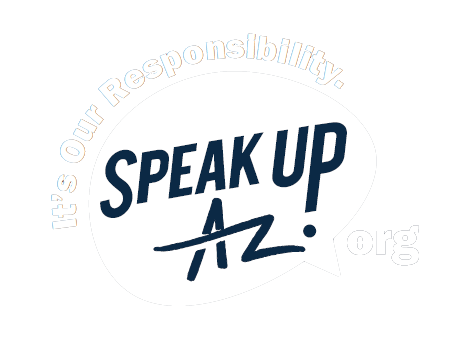One Spark Can Set Off a Wildfire, and a DES Chain Reaction for DDD Member Safety

Team effort ensures Individuals with Disabilities are safe
Wildfires ignite as a result of nature (e.g., lightning), human activity or negligence (such as an unattended campfire). No matter the cause, the result can be devastating and life threatening. Keeping safe can be particularly challenging for individuals who have disabilities. Working with first responders, social service agencies and other government organizations, the Arizona Department of Economic Security (DES) has safeguards in place to help protect the individuals it serves. Here's a glimpse behind the scenes of the DES Division of Developmental Disabilities (DDD) emergency protocol.

Craig Sewell
OIG Emergency Planning and Preparedness Administration
Craig Sewell is the Program Coordinator for the Emergency Planning and Preparedness Administration (EPPA) within the DES Office of Inspector General (OIG). EPPA issues a daily report on all wildfires that are occuring throughout Arizona. Craig explains, "Although there may be 50 wildfires that are active within the state, there may be only 14 that are within 15 miles of DES interests. We monitor all, but give more attention to those that are close to our interests." EPPA monitors for all DES divisions with offices around the state. "We also report on any extreme weather, such as flooding or heavy snow," said Craig.

David Blount
DDD Healthcare Services' Quality Management
David Blount, a program coordinator with the DDD Healthcare Services' Quality Management Unit, uses the reports to reach out to DDD contracted vendors of group homes and adult day-training facilities within a 15-mile radius of a wildfire. All DDD contracted agencies have emergency plans in place, and the Quality Management team notifies the facilities to be prepared for first responders' evacuation orders. He also advises the facility to help members gather clothes, medication, and important identification documents. Equally important to include, he says, is "something the member likes; something familiar that will help keep them calm." He explains that transitions can be especially hard for individuals with developmental disabilities and can cause extreme anxiety. "Sometimes, the facilities will include members in packing up the van, so that they feel part of the process," said David.
It may take multiple attempts to reach a provider, and the Quality Management team may contact these facilities three separate times during the course of a day to keep them updated of the ever changing direction and sweep of a blaze. Quality Assurance (QA) managers and supervisors in each district make those phone calls and may be dealing with multiple fires in their particular district. For a better perspective on the amount of effort it takes, David mentioned the Wasp Fire in Tanque Verde (outside of Tucson) this past July. QA staff needed to reach out to the 99 group homes and six day training facilities that were involved. "We keep calling until we make contact," said David. He also reaches out to DDD's Support Coordination leadership.

Jen Myler
DDD District Program Manager
Whereas QA handles facilities, the Support Coordination team, with help from Business Operations teams look out for individual members. Located in Flagstaff, Jen Myler, DDD District North Program Manager, has been involved with the Division's emergency planning and preparedness protocols for years. "It's, sadly, just another day at the office," said Jen. "We don't deal with just wildfires–we deal with snow, power outages, floods after the wildfires. There's a plethora of things we deal with each year and so we have it down to a bit of a process."
"Once we verify there is a fire, we'll work with our Business Operations team … Lyndell is great," said Jen. "She'll get us the report as quickly as she possibly can; typically within 30 minutes, we have a listing of the clients covering that area."

Lyndell Yazzie
DDD District North Business Operations Manager
Lyndell Yazzie is the Business Operations Manager for District North. She pulls the report generated by EPPA and works with other teams to map out the coordinates of individual DDD members in a specified area, including those who are identified as "power dependent" (reliant on electricity for any necessary equipment), and distributes the lists to the appropriate DDD Area Program Managers. When a fire changes direction, Lyndell goes through the process again to generate updated coordinates.
She also coordinates information and evacuation commands from local fire departments, sheriffs' offices, Red Cross, animal shelters, and other community groups or municipalities, as well as internal DES staff. "It's amazing how the community all comes together when this happens," said Lyndell. "No one is ever left alone, no one is left unattended."
"We all work together"
Each Support Coordinator calls the members they support. "We call when we're in the ‘Set' status; we don't wait for ‘Go' status," explained Jen. Ready, Set and Go are the terms used to identify which stage of the process they're in and which action will be taken for an impending evacuation order. "We should always be ‘Ready,'" said Jen. "When we get to ‘Set' status, we're going to start making the calls because we're going to make sure that you don't need any help to get out. From all of my experience, you go from ‘Set' to ‘Go' like that. When you get to ‘Go,' you've got to go. They're not playing around."
Each Support Coordinator makes the calls. "If there are more calls to be made than is really feasible for any one unit, we'll pull from other areas," said Jen. "We really work as a team. Because DDD members are all our ultimate responsibility, [we all] make sure members are safe. Once we're at that point, when those evacuations happen, we try to follow up to make sure the member has what they need."
"It doesn't end after the evacuation. Once we know they're safe, there are other things that we need to help support them with." For example: There was an emergency situation where the member and his family were evacuated to a shelter. The parents reached out to their Support Coordinator and said, "My son [a DDD member] needs his hospital bed. We can't do this on the cot. He needs a hospital bed." The Support Coordinator worked her magic and within 24 hours, there was a new hospital bed delivered to the member at the shelter.
Afterwards, when it's all said and done, DDD reports to AHCCCS, to let them know that the calls have been made and the results. "That's our final step," said Jen. "It's just a team effort to make sure members are safe."
"This kind of support is a hallmark of what we do at DDD," said DDD Assistant Director Zane Garcia Ramanda. This is one of many examples that occur behind the scenes in which the teamwork and collaboration between DDD functional units, DES' Emergency Planning & Preparation, and community partners leads to important results.

